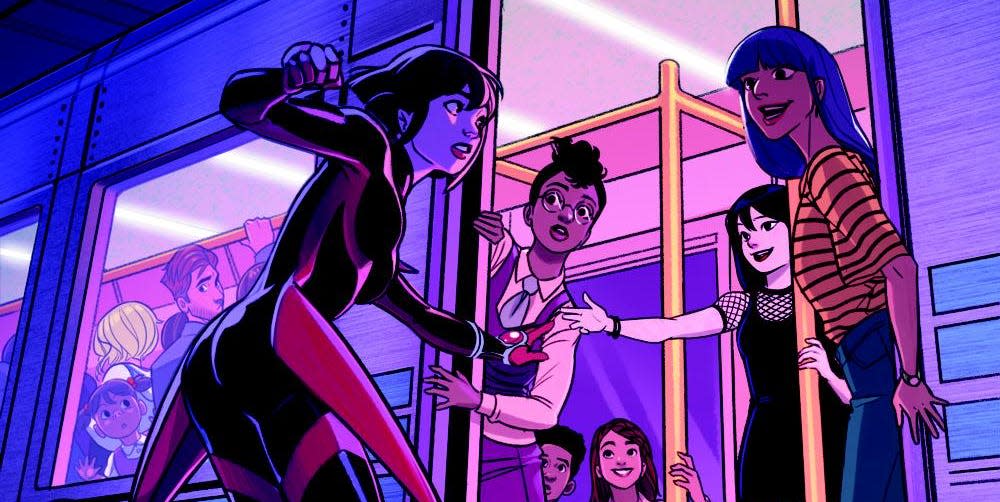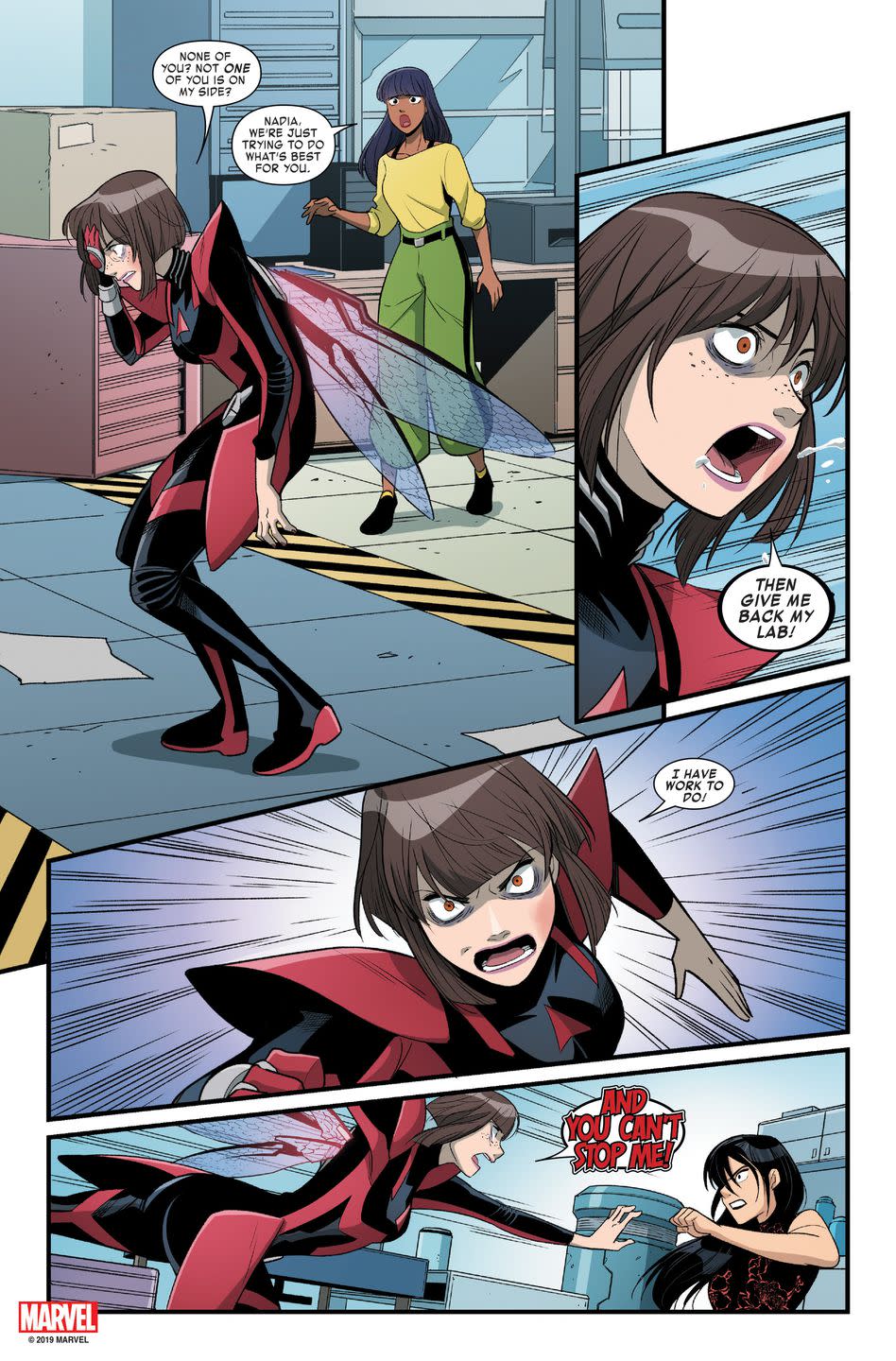Marvel's New Comic Book Series Stars a Superhero With Bipolar Disorder

Jeremy Whitley has built his career on smashing taboos and opening up representation in popular culture. The comic book writer, who’s worked for Marvel among other companies, started the award-winning series Princeless in 2011, depicting a young black princess who starts to question what it means to be a princess-and, instead of waiting for her prince charming to save her from imprisonment in a tower, trades her dress for armor and does something about the situation.
“I have two daughters who are both young women of color, and I wanted them to see themselves reflected in this fairy tale where they often don’t get to see themselves reflected,” Whitley told Men’s Health. “And that sort of blew up into a larger thing over time that’s still ongoing.”
His latest accomplishment is bringing a nuanced understanding of mental health, and bipolar disorder in particular, to Marvel’s current Unstoppable Wasp series that he’s writing. (Issue No. 5 recently came out, and Issue No. 6 will be released on April 10.)
The story features the Unstoppable Wasp herself, Nadia Van Dyne-you might’ve caught a different version of the superhero in the 2018 movie Ant-Man and the Wasp, played by Evangeline Lilly. A brainiac Avengers member who can change her size at will and launches a female-led scientific center called G.I.R.L. (Genius in Action Research Labs), she’s also the daughter of Hank Pym, aka Ant-Man. As it turns out in the series, she shares his bipolar disorder.
If you're not familiar with bipolar disorder, the mental illness is associated with extreme mood swings between highs (known as "mania") and lows (known as "depression"). It's also associated with a genetic risk.
Whitley got idea to tackle mental illness as his subject matter during conversations with his editor, Alanna Smith. “Depiction of mental illness in comics goes back to the ‘70s. There was slightly less knowledge about bipolar disorder and how it affects people. We saw this opportunity to do a more modern story, a very different kind of story than what we felt like was out there,” Whitley says.
That history in comics is checkered with some unfortunate images. “We wanted to make sure that we didn’t deal with [bipolar disorder] the way a lot of people are used to seeing from older comic book media, where somebody is innately bad or evil because they have some sort of mental disorder,” Whitley says. Take Two-Face, the popular DC Comics supervillain (and foe of Batman) who, following a facial scarring, develops two personalities-one good, one wicked. While Two-Face is widely read as having bipolar disorder, that characterization is “closer to a movie version of dissociative identity disorder,” rather than scientific consensus on bipolar disorder, and it uses his illness as an explanation for his evilness. The same type of thinking also contributed to previous depictions of Hank Pym, who had another villainous personality in Yellowjacket.
“I think there’s been misunderstanding,” Whitley says. “That’s rough especially for people who really enjoy comics and love superhero stories but struggle with mental illness themselves, and who only really see themselves projected as villains.”

Unstoppable Wasp decidedly shatters that misbegotten notion. Nadia is an “upbeat, exciting, and young character” readers can be happy to see themselves in, the writer notes. He was also intrigued by another possibility. “Bipolar disorder jibes with being a superhero in a very interesting way, in that superheroes are often expected to push themselves beyond the healthy human limits to do things, to put themselves in that space of being physically and mentally exhausted and still come out on top. That is very much in line with what somebody experiencing a manic episode would be doing.”
Awareness about bipolar disorder has seen an uptick as more public figures talk openly about their own suffering. Kanye West called bipolar disorder “my superpower… ain’t no disability” on his latest album Ye, and Mariah Carey revealed her diagnosis last year. To avoid misrepresenting the disorder, Whitley consulted with several experts, including psychologists and psychiatrists and people who either suffer from bipolar disorder or know someone who does.
Just as importantly, Nadia is portrayed as someone who doesn’t run away from her diagnosis but incorporates it into her life-and, even with her superpowers, looks to others for assistance in getting better. “I need help. I think I’m bipolar... and I don’t think I can handle this alone,” she says in a poignant moment in Issue No. 5.
“She’s got to ask herself why she’s doing what she’s doing. Her family and friends have to keep an eye on her because if she’s determined, if she’s seeing this problem as fixable, she will stay up for weeks. She won’t sleep until it’s taken care of. I feel like that’s a very relatable thing as far as what we expect from superheroes and what people deal with in their real lives,” Whitley adds, including his own life. “I know myself and other creative folks often have to deal with having this drive to get things done and you have to figure out at what point your work is also your hobby, and maybe you should get out of the house and relate to other people.”
Whitley hopes readers who deal with mental illness themselves feel emboldened rather than burdened by the story. “Nadia is still a hero even at her worst,” he says. “I think it’s a very heroic thing to admit that you’re overmatched and you need somebody who knows what they’re doing.”
Marvel is no stranger to confronting provocative social topics from a progressive stance. The X-Men are frequently read as a metaphor for the Civil Rights Movement and LGBTQ rights. Unstoppable Wasp is yet another step forward. “That’s a legacy that goes back to Stan lee and Jack Kirby,” Whitley says. “I’m very proud to be whatever small part of that legacy I am.”
('You Might Also Like',)

